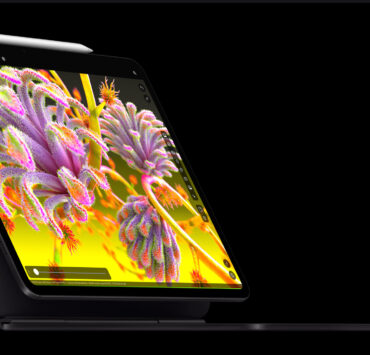
Since Apple unveiled the M1 chip back in 2020, the personal computing space has felt unbalanced. Apple’s products have enjoyed a level of performance which the rest of the PC world simply hasn’t matched. That comes with bragging rights. We’re now on the 4th generation of M-series chips, with the recent announcement of the M4 chip in the latest iPad Pro.
But something happened just last week. It feels like an official response to Apple’s dominance. In what looks like a choreographed move, several PC makers announced new devices that promise to rival Apple silicon in performance and efficiency. All these devices share a common denominator, they have one of two breakthrough chips from Qualcomm, a leading chip company known for its presence in the mobile space.
It’s game on from the competition. To appreciate what’s happened here, it helps to reflect briefly on how Apple came to dominate the space.
A brief recap
The technology behind Apple’s M-series chips that now power their product line wasn’t always first in class for desktop devices. Based on the ARM chipset architecture that is popular in mobile devices due to its minimal power draw, their earliest attempts to power desktop PCs with it failed to keep up with the performance of Intel processors. Indeed, in 2005, Apple made the strategic decision to put Intel processors into their PC lineup.
But being a mobile-first company, they still had use for the ARM-based chips and continued to power their mobile devices with it. Over the years, the team kept improving the technology through successive iterations, until they felt it was ready for the next big thing, and put the M1, an upgraded version of the iPhone chip, into the Mac lineup in 2021. They haven’t looked back.
The performance of these chips has since given Apple what seemed like an unassailable lead. But that narrative is now in check, with Qualcomm’s newly released chips.
Hello Snapdragon X
In November 2023, Qualcomm’s CEO announced a new ARM-based chip that would establish leadership in the PC device space, with claimed performance benchmarks making headlines. The mobile chip company, best known for its Snapdragon lineup had been building up their capabilities in the PC space. In 2021, they paid $1.4b for NUVIA, a startup founded by former Apple engineers, all of whom worked in senior roles on Apple’s mobile chip technology. A not-so-subtle statement of intent.
Earlier this week, Microsoft, Lenovo, HP and Dell were among the first to announce products featuring Qualcomm’s new ARM-based chips for PC, the Snapdragon X Elite and Snapdragon X Plus. We can reasonably expect more brands to line up for a piece of the action. It’ll be interesting to see how things shape up once these products start shipping to customers very soon.
Notably, the chips are cheaper to produce. As such, the products they power should be cheaper. That’s a significant detail. Since Apple’s devices are often criticised for being overpriced, a technological breakthrough that could reduce the competition’s price only brings this concern into sharper focus.
It’s also worth noting that the Snapdragon X series chips boast superior battery life and on-device AI capabilities.
Microsoft plans to leverage these AI capabilities through an AI assistant for Windows called Copilot (currently in preview). In a recent announcement, they referred to new AI-enhanced PCs that can take full advantage of the AI in Windows as Copilot+ PCs.
The scene is set for a major showdown. By tuning ARM-based chips for PCs, Apple showed a proof of concept to everyone, and notes were taken. Now Qualcomm is moving to bring the benefits to the wider PC consumer world. But it’s not all roses and red carpets. There are considerable headwinds to contend with.
Some headwinds
For one, PC makers don’t have the same control over their Operating System (Windows) as Apple does with Macs. This makes it hard for PCs to achieve the level of finesse in the overall user experience that Mac owners know and love. Microsoft admittedly has a leg up on other PC makers with their surface line-up, considering they control the OS and the devices. I’m hoping this integration translates to a better user experience.
Staying on user experience, there might be a more significant technical barrier to scale for Windows on ARM. Several experts note that most Windows software in the market today is developed for the other type of chip, that is not ARM. Specifically, the x86 chip architecture which brands like Intel and AMD are synonymous with. The challenge is bringing Windows apps natively to ARM.
Microsoft rightly anticipated this need. In their recent keynote, they announced Prism, a new ARM emulator on Windows 11. Think of it as a translation layer that helps ARM-based Windows PCs decode apps that were written for x86 chips. It’s true that developers now have an incentive to do the legwork of creating ARM versions of their apps to run natively on the new PCs. But as long as there are apps that can’t run natively on ARM chips, the ability of Prism to plug this gap and keep x86 apps running smoothly on ARM will be significant to the user experience.
Final thoughts
When Qualcomm CEO, Cristiano Amon, made the initial announcement late last year, he didn’t mince words.
I’m very pleased to tell you that there’s a new sheriff in town.
I wonder what the next play for x86 chip brands like Intel and AMD would be, all things considered. Whether or not this threat proves existential would depend on their ability to reposition and pivot. I’m not too concerned though, Big Tech companies tend to have a plan. They’ll invest a bunch and make things happen.
To square with you, I don’t have $1.4b in loose change lying around – this economy is something. But that kind of money can certainly buy a wealth of possibility, and do a world of good. And I’m here for it.



